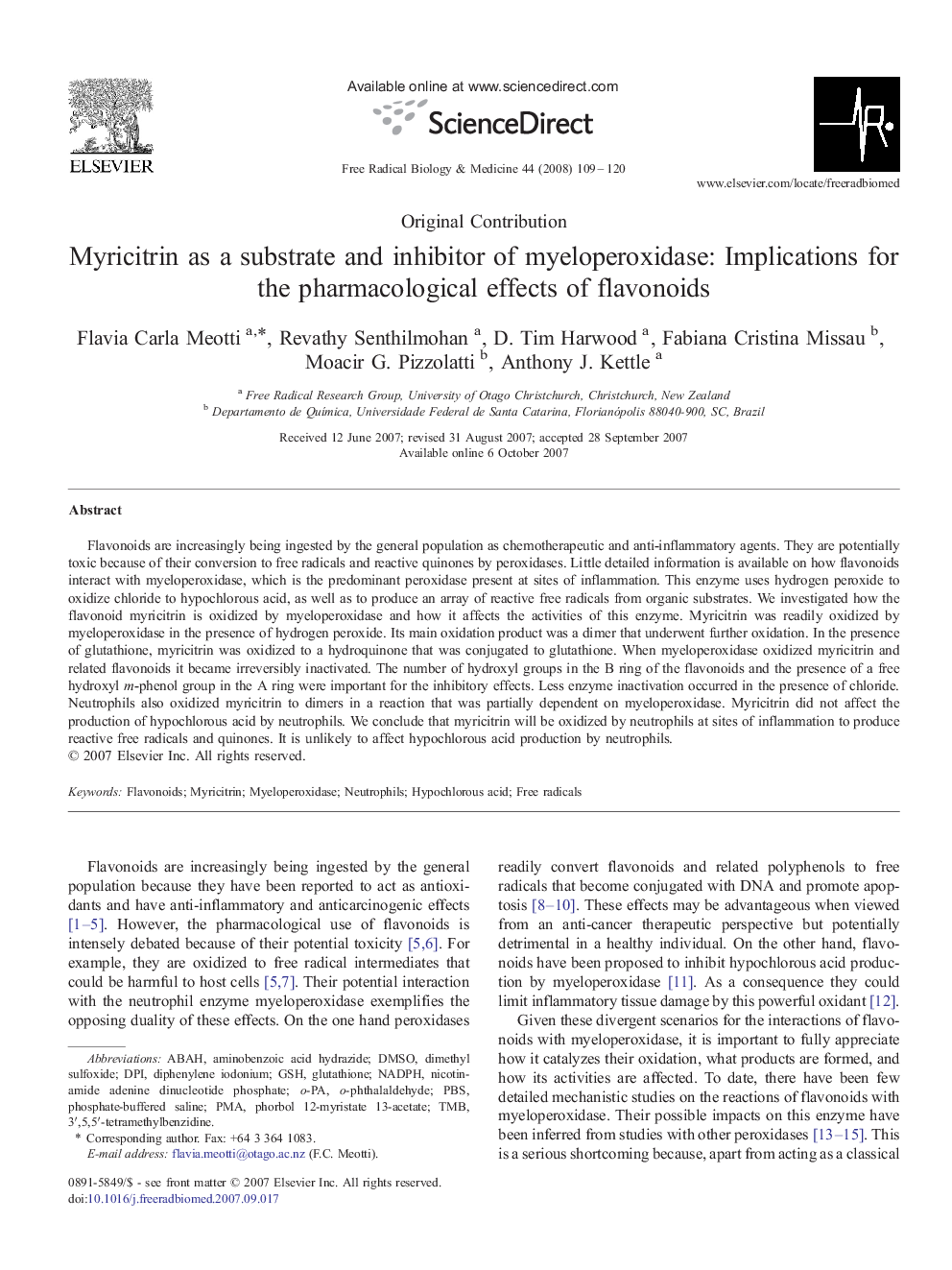| Article ID | Journal | Published Year | Pages | File Type |
|---|---|---|---|---|
| 1910449 | Free Radical Biology and Medicine | 2008 | 12 Pages |
Flavonoids are increasingly being ingested by the general population as chemotherapeutic and anti-inflammatory agents. They are potentially toxic because of their conversion to free radicals and reactive quinones by peroxidases. Little detailed information is available on how flavonoids interact with myeloperoxidase, which is the predominant peroxidase present at sites of inflammation. This enzyme uses hydrogen peroxide to oxidize chloride to hypochlorous acid, as well as to produce an array of reactive free radicals from organic substrates. We investigated how the flavonoid myricitrin is oxidized by myeloperoxidase and how it affects the activities of this enzyme. Myricitrin was readily oxidized by myeloperoxidase in the presence of hydrogen peroxide. Its main oxidation product was a dimer that underwent further oxidation. In the presence of glutathione, myricitrin was oxidized to a hydroquinone that was conjugated to glutathione. When myeloperoxidase oxidized myricitrin and related flavonoids it became irreversibly inactivated. The number of hydroxyl groups in the B ring of the flavonoids and the presence of a free hydroxyl m-phenol group in the A ring were important for the inhibitory effects. Less enzyme inactivation occurred in the presence of chloride. Neutrophils also oxidized myricitrin to dimers in a reaction that was partially dependent on myeloperoxidase. Myricitrin did not affect the production of hypochlorous acid by neutrophils. We conclude that myricitrin will be oxidized by neutrophils at sites of inflammation to produce reactive free radicals and quinones. It is unlikely to affect hypochlorous acid production by neutrophils.
